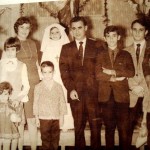Wed 6 Mar 2013
It took the death of Hugo Chavez, unfortunately, to turn the attention of the U.S. press back toward Latin America in general and Hugo Chavez in particular. However, the biographies of the late Venezuelan leader are useful for highlighting some of the commonplaces in the history of the region. The obituary by Simon Romero of the New York Times, for example, evokes the caudillo and populist, which are too common categories of leaders in Latin America.
He was a dreamer with a common touch and enormous ambition. He maintained an almost visceral connection with the poor, tapping into their resentments, while strutting like the strongman in a caudillo novel. His followers called him Comandante.
In office, he upended the political order at home and used oil revenues to finance client states in Latin America, notably Bolivia and Nicaragua. Inspired by Simón Bolívar, the mercurial Venezuelan aristocrat who led South America’s 19th-century wars of independence, Mr. Chávez sought to unite the region and erode Washington’s influence.
Another remembrance from the prolific Latin American historian Greg Grandin tries to push back against the lazier U.S. views of Chavez, which distort him through a caracature that he was mentally unstable megalomaniac and his followers were merely stupid and seduced. I applaud Grandin’s view and share his regrets about U.S. news media coverage of Latin America. Although I think Chavez fell far short of the quality of leader that Venezuela’s poor deserve, and even fell short of other actual populist Latin American leaders in the last few decades, he gets a better grade than most leaders that have been inflicted on Venezuela.



